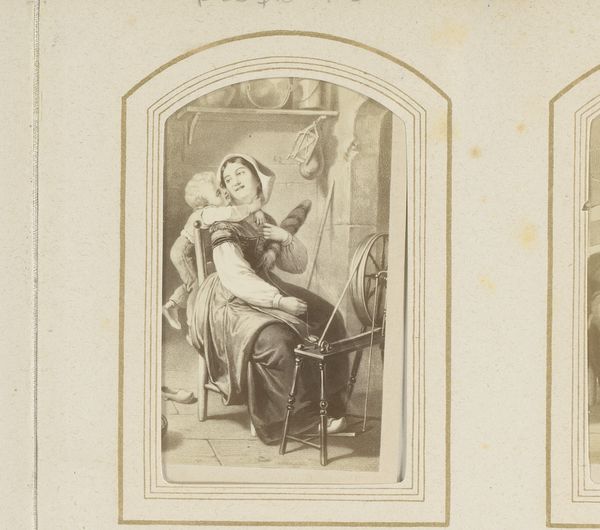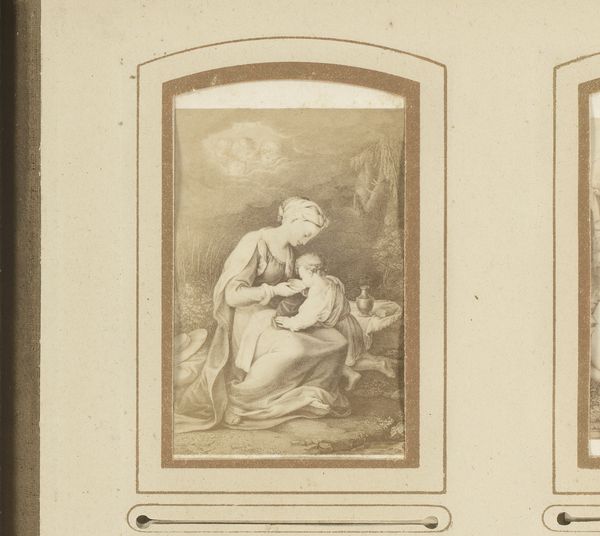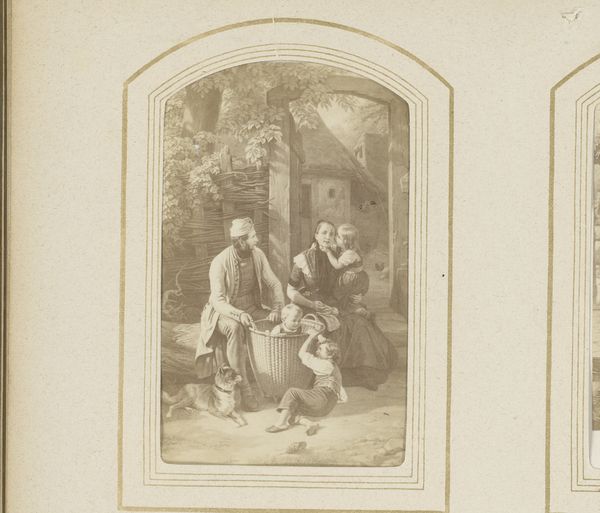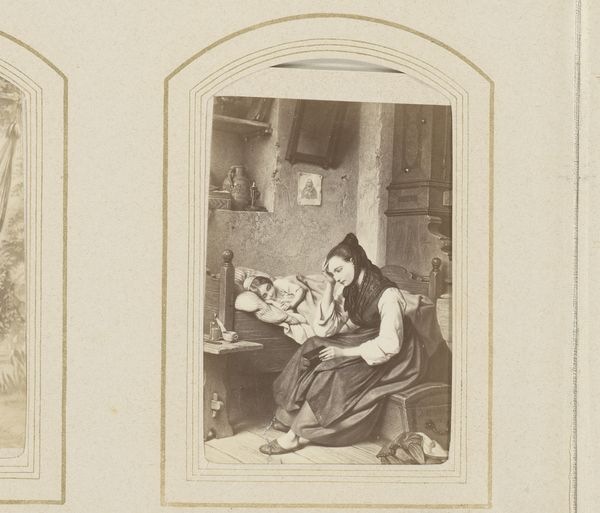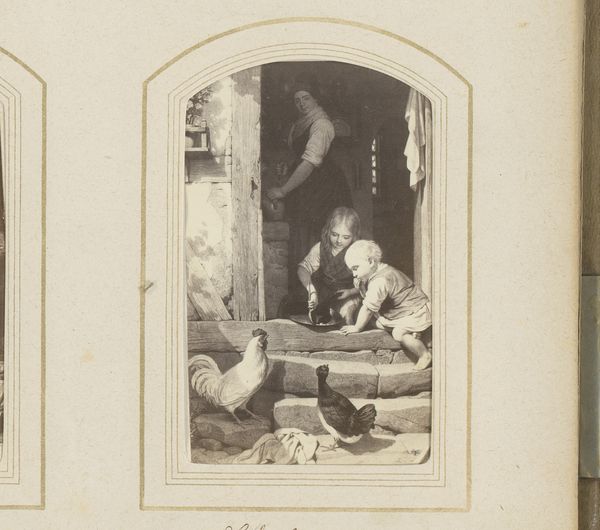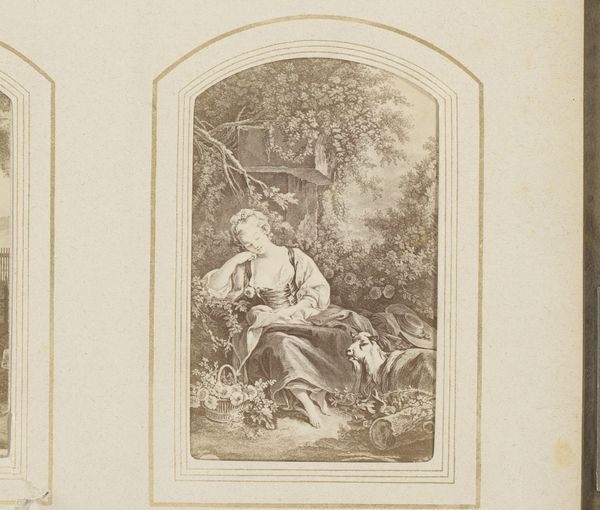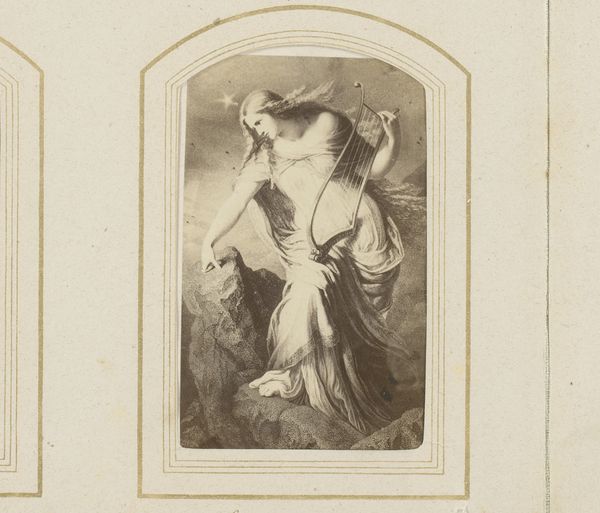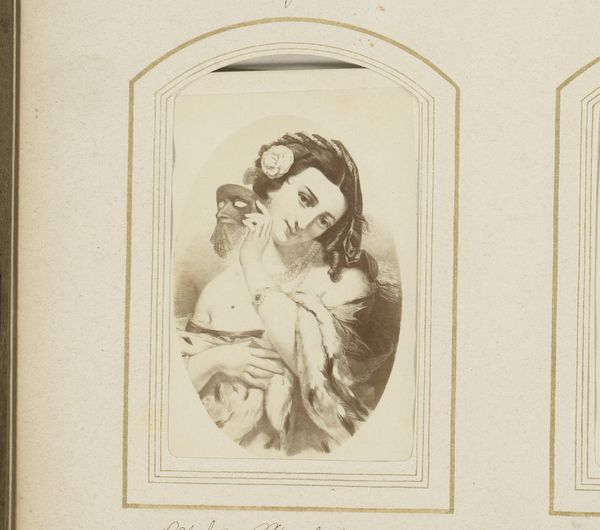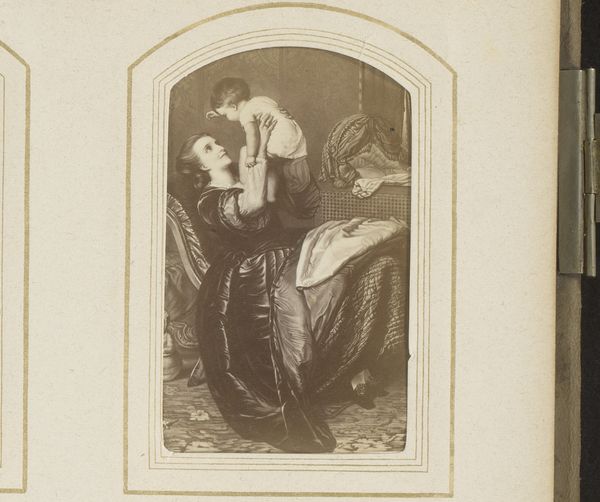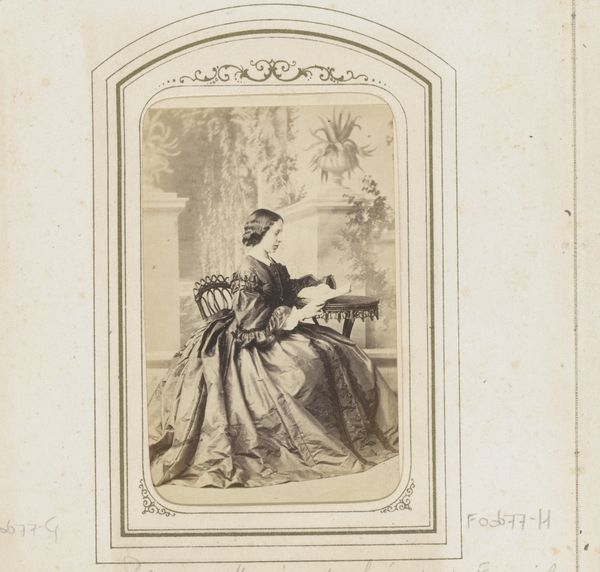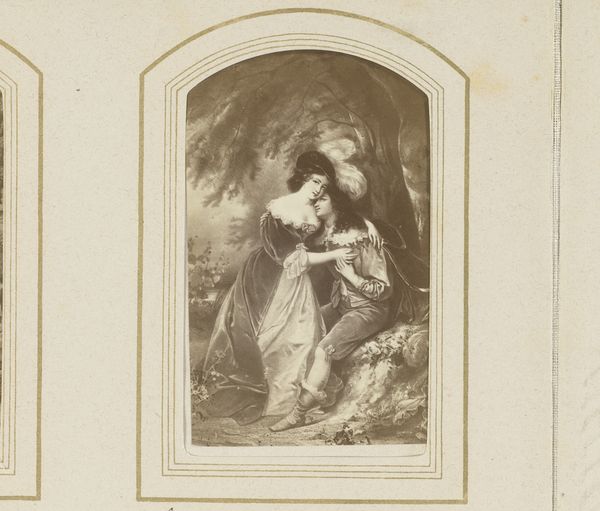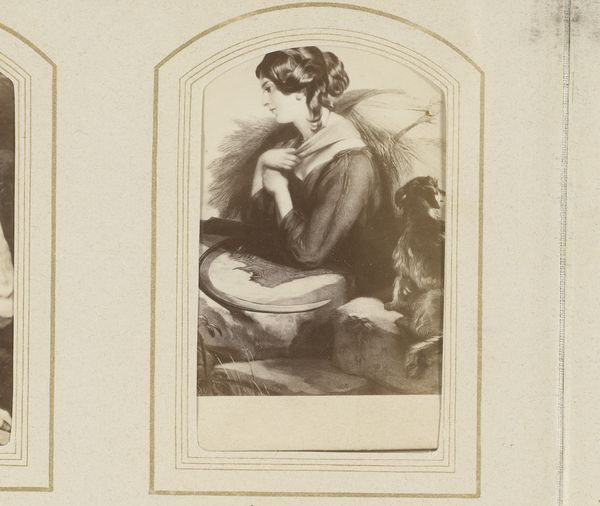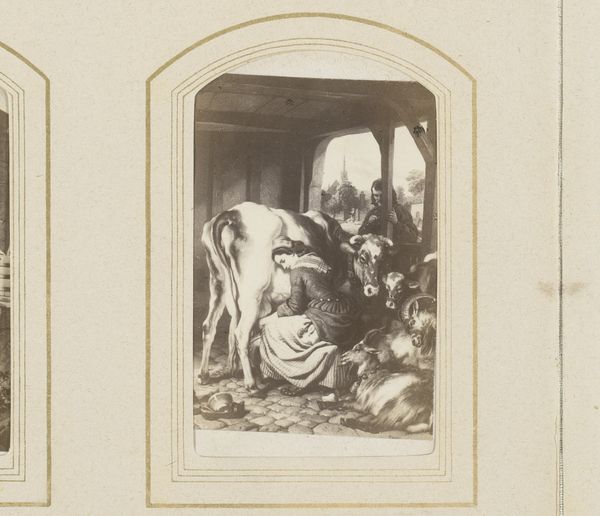
Dimensions: height 95 mm, width 63 mm
Copyright: Rijks Museum: Open Domain
Curator: Gazing at this gelatin-silver print, "Fotoreproductie van Margarethe," likely taken between 1870 and 1890, I’m immediately drawn to the gentle melancholy it evokes. It whispers stories of hearth and home, doesn't it? Editor: It does, though the material tells a different story to me, immediately. Look at the way the gelatin silver allows for this almost hyper-realism; a contrast to the romantic sentimentality that it captures. That industrial revolution coming to capture the quaint scene. Curator: Ah, yes! It's a captured moment that feels lifted from a genre painting. The anonymous photographer immortalized this woman at her spinning wheel—a beautiful, solitary act of creation and, perhaps, patience. There's a stillness about it, a peacefulness. She almost looks to be praying or contemplating something. Editor: Praying, contemplating... or exhausted? Look, spinning was work. Labor. Think of the repetitive action involved and consider that photography allowed to freeze such labor with remarkable clarity. The work to be done is always physically evident and not romantic at all. It raises all these issues that it maybe doesn't set out to raise. Curator: Perhaps, but I like to imagine the stories woven into each thread. Maybe she's spinning a wedding dress, or warm blankets for her children? There's something deeply personal, almost devotional about the process, which photography at the time surely had difficulty with? The idea of holding so much time inside a silver print must have seemed miraculous. Editor: Miraculous perhaps for some, or simply more labor? To the middle classes who could see these photographs perhaps felt reassured, in the sense of labor happening "elsewhere"? Consider who might consume a work of this nature and then you begin to understand who is making profit or social impact. Curator: Well, either way it gives us something precious to observe. I find the play of light and shadow to be stunning – the way the light caresses her face and casts delicate shadows within the scene. There's a sensitivity that's quite moving. Editor: And how that light, that specific manipulation within photographic chemicals gives us insight into how industry was coming to affect the visual arts. Every dark room involved not only art but science, but workers producing those very elements used to portray them... Fascinating how these layers continue to create new perspectives on "Margarethe."
Comments
No comments
Be the first to comment and join the conversation on the ultimate creative platform.
